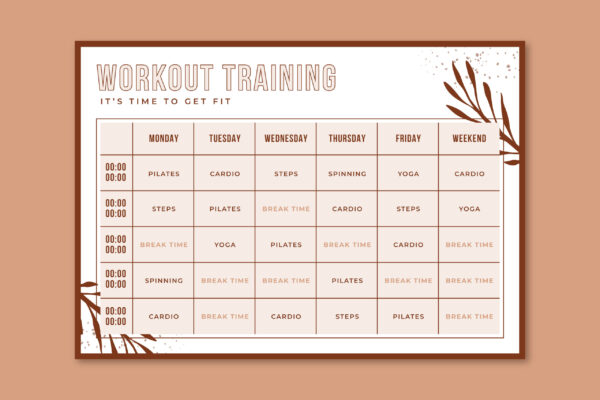Cross training isn’t just a break from running—it’s the secret weapon for building strength, improving endurance, and staying injury-free. Whether you’re preparing for your first 5K or training for a full marathon, smart cross training keeps your muscles balanced, your mind engaged, and your performance climbing. In this ultimate guide to cross training, we’ll explore the best strategies, exercises, and plans to support your running journey—step by step, without burnout.

🚴♂️ What Is Cross Training?
Cross training refers to engaging in different forms of exercise that complement your primary sport—in this case, running. While running mainly stresses your lower body and cardiovascular system, cross training targets other muscle groups and movement patterns. It’s like giving your body more tools in the toolbox.
💪I do Cross Training workouts myself – see how on Marathon Training Buddy YouTube.
Think swimming, cycling, strength training, yoga, hiking, even dancing. The variety keeps training fresh and prevents overuse injuries from the repetitive stress of pounding pavement.

💪 1. It Builds Balanced Strength
Let’s be honest: most runners aren’t known for their upper body or core strength. But these areas matter more than we often realize. A strong core keeps your posture upright during long runs. Strong glutes power your stride. And upper body strength helps maintain arm drive and rhythm.
Cross training helps develop these muscle groups in a way that complements your run training. Bodyweight workouts, resistance bands, kettlebells, and gym strength programs are all useful tools.

A well-designed strength routine 2–3 times a week can:
-
Improve your running economy
-
Prevent common injuries like IT band syndrome and runner’s knee
-
Help you maintain form in the final miles of your race
And best of all? You’ll feel more capable in everyday life too.
🩹 2. It Reduces Injury Risk
Overuse injuries are the #1 reason runners get sidelined. Most of these stem from the repetitive motion of running—especially if you increase volume too quickly. That’s where cross training becomes your injury insurance.
By swapping a few weekly runs for low-impact activities like swimming, underwater activities, or cycling, you give your joints a break while still maintaining cardio fitness. This recovery in disguise lets your body repair micro-damage before it becomes a full-blown injury.

For those coming back from injury, this approach is essential. Cross training can maintain endurance while allowing soft tissue to heal. Just be careful not to overdo it—your body needs rest as well as movement.
🧠 3. It Boosts Mental Motivation
Let’s be real—running can feel monotonous, especially during peak marathon training. When you’re hitting 5 or 6 sessions a week, even the most beautiful trails can start to blur.
Cross training offers a mental refresh. A group cycle class, a hike with friends, or an energizing swim can reignite your love of movement. The psychological lift from doing something new or fun shouldn’t be underestimated.

✅ Mental variety = more consistency = better training outcomes.
Many runners report better long-term adherence when their schedule includes fun, flexible cross training options. If you want running to be a sustainable lifestyle, joy matters.
🔗 Need a mental boost? 10 Motivating Marathon Training Tips
🏋️ 4. It Supports Efficient Recovery
Believe it or not, recovery doesn’t always mean lying on the couch. Active recovery—gentle movement that increases circulation without stressing your body—can accelerate healing.
Cross training activities like walking, light swimming, or restorative yoga help:
-
Flush metabolic waste from muscles
-
Reduce stiffness after hard runs
-
Promote circulation and oxygen delivery

It’s about movement without overload. After a long run, consider trading your rest day for a 30-minute swim or mobility flow. Your next run might feel surprisingly springy.
👉 The key to successful cross training isn’t random workouts—it’s picking movements that support your endurance goals. We’ll walk through the best ones below.
🏊♂️Cross training is also about resistance and variety
It’s easy to fall in love with runs where the body just feels easy. But most runners know that development happens in resistance. This is where cross training comes in as a valuable valve – because it can push us in new ways without wearing out our running muscles.
Imagine an interval session in the swimming pool. Your heart rate is pounding, you’re struggling through the water – but your knees? They love it. Or think of a strength training session with barbells: Your hips and buttocks are activated in a way that your long, monotonous runs never achieve. It makes you more versatile, more robust – and more ready to run.

The variety also helps with motivation. When you know that tomorrow you’re going to bike in the forest or do yoga in the park, the risk of burnout is reduced. You still train purposefully, but with a twist that keeps your joy of training alive. Because marathon training shouldn’t feel like punishment. It should be a journey that you want to continue – even after the race is over.
🌄 5. It Builds Endurance Without Extra Running
You can only run so much before the benefits level off—or injuries creep in. But you can build your aerobic base in other ways.
Cycling, rowing, stair climbing, and swimming all provide excellent cardiovascular challenges without the pounding stress of running. By keeping your heart rate in the aerobic zone, you reinforce the same endurance systems that make you a better runner.

💡 Marathoners often include 1–2 weekly cross training sessions to supplement mileage safely.
🔗 Curious how to time your sessions? Marathon Training Schedule – Beginner to Intermediate
⛷️ 6. It Keeps You Fit During Off-Season or Downtime
Even the most motivated runners take breaks—whether due to injury, travel, or seasonal burnout. Cross training is your bridge between run blocks.
Instead of feeling like you’re losing fitness, embrace this period as a chance to improve elsewhere. Maybe you’ll finally try spin classes or master that pull-up. It all contributes to your athleticism and mental resilience. You can also try training with elastic bands.

This shift in focus can also prevent the mental crash that sometimes follows a big race. When the training plan ends, you’ve still got movement to enjoy.
🔗 Coming back from downtime? Read: How to Start Running Again After a Break
🧭 Use Cross Training as Your Compass in Tough Weeks
We all have those weeks where everything falls apart—work piles up, the kids get sick, and your running plan goes out the window. In those moments, it’s easy to feel like all is lost. But that’s exactly when cross training can become your compass.
A 20-minute rowing session in the basement. A few resistance band exercises on the living room floor. A quick bike ride instead of the long Saturday run. It all counts. And it doesn’t just make your body stronger—it reminds you that you’re still showing up, even when things aren’t perfect.
These weeks teach us something important: it’s not about perfection—it’s about consistency. You can still be a focused runner, even if your watch doesn’t show 40 kilometers this week. And that might just be the most powerful mental lesson cross training offers: you’re still in it, even when everything feels sideways.
🧩 Bonus: How to Add Cross Training to Your Week

Here’s a sample weekly structure that includes cross training without overwhelming your body:
Sample Schedule (Intermediate Runner)
-
Monday: Strength training (45 min)
-
Tuesday: Run (easy pace, 6K)
-
Wednesday: Cycling or elliptical (45 min steady)
-
Thursday: Run (interval or tempo)
-
Friday: Rest or yoga (mobility focus)
-
Saturday: Long run (build up distance)
-
Sunday: Swim or hike (low impact)
⏳ Total: ~5–6 active sessions, only 3 of which are runs.
You’re building fitness, balance, and joy—not just stacking mileage.
📚 Trusted Resources on Cross Training
For more in-depth information on the science of cross training and endurance, check out:
Both offer well-researched, beginner-friendly explanations.
🧵 Final Thoughts: Don’t Run Yourself Into the Ground
Cross training is not a compromise—it’s a strategy. It helps runners of all levels become stronger, more balanced, and more joyful athletes. And when done right, it can even enhance your love of running.
As you move forward in your training, remember that being a runner isn’t just about miles. It’s about movement, strength, and energy. Cross training is one of the smartest ways to stay in the game for the long haul.
📝 Your body will thank you.
🧡 “Strong runners aren’t made from running alone. They’re built with variety, intention, and joy.”
❓ FAQ – Cross Training for Runners
Q: How many times a week should I cross train?
A: 1–3 times a week is a great starting point depending on your running volume.
Q: What’s the best cross training if I hate the gym?
A: Swimming, hiking, dancing, and home bodyweight workouts are all excellent non-gym options.
Q: Can I replace a run with cross training?
A: Yes! Especially during recovery weeks, injury, or mental burnout. Just choose a low-impact, aerobic activity.
Q: Does cross training count toward marathon training?
A: Absolutely. As long as it supports endurance, strength, or recovery—it helps your marathon base.
📣 If this post inspired you to rethink your rest days, feel free to share it with your running friends or community!





